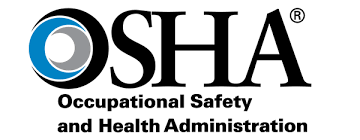OSHA Warns of Heat Related Danger

Special to The Messenger
EAST TEXAS – With temperatures reaching triple digits on the heat index in Texas, the U.S. Department of Labor’s Occupational Safety and Health Administration is calling on area employers to protect workers indoors and outdoors – from the dangers of heat illness. The heat index is expected to be at or above 100 degrees in Arkansas, Louisiana, Oklahoma and Texas, for the next week. Nearly three out of four heat illness fatalities happen during the first week of work. New and returning workers need to build tolerance to heat by taking frequent breaks and working shorter shifts in the heat to start.
OSHA’s message is simple: Water. Rest. Shade.
- Encourage workers to drink water every 15 minutes.
- Take frequent rest breaks in the shade to cool down.
- Have an emergency plan ready to respond when a worker shows signs of heat-related illness.
- Train workers on the hazards of heat exposure, and how to prevent illness.
- Allow workers to build a tolerance for working in heat.
The OSHA-NIOSH Heat Safety Tool is a free, downloadable app that calculates a worksite’s heat index and displays the associated risk levels. Users can receive precautionary recommendations specific to heat index risk levels to help protect employees from heat-related illness. The tool is available in English and Spanish.
OSHA’s Occupational Heat Exposure page explains the symptoms of heat illness, first aid measures to provide while waiting for help, engineering controls and work practices to reduce workers’ exposure to heat, and training.
Understanding Your Rights
Exposure to heat can cause illness and death. Workers should know their rights and what they can do to prevent heat illness.
Federal law entitles you to a safe workplace. Your employer must keep your workplace free of known health and safety hazards. You have the right to speak up about hazards without fear of retaliation. You also have the right to:
- Receive workplace safety and health training in a language you understand
- Work on machines that are safe
- Receive required safety equipment, such as gloves or a harness and lifeline for falls
- Be protected from toxic chemicals
- Request an OSHA inspection, and speak to the inspector
- Report an injury or illness, and get copies of your medical records
- Review records of work-related injuries and illnesses
- See results of tests taken to find workplace hazards





